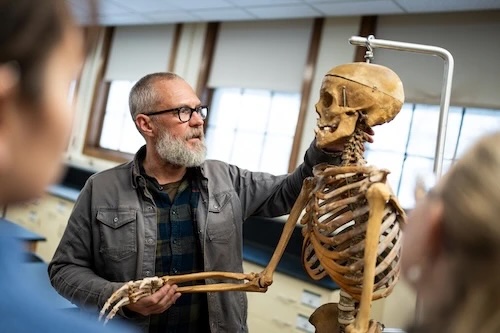
MSU to Create First-of-Its-Kind Database for Analyzing Human Remains

Joe Hefner in his lab. Hefner is leading a project to develop a a computer program that produces a holistic biological profile of human remains. Credit: Nick Schrader.
When a medical examiner needs help identifying a deceased person and determining how that person died, they turn to forensic anthropologists.
To aid in the identification of unknown human remains, forensic anthropologists are often called upon to create a biological profile, or an estimation of the unknown individual’s age, biological sex, social race (or ancestry) and stature.
If you’ve watched the TV show, “Bones,” in which the FBI teams up with a forensic anthropologist to solve federal cases that may involve murder and human skeletal remains, you have some familiarity with the field of forensic anthropology. However, the real work of a forensic anthropologist isn’t exactly like it’s portrayed on the show; their work is generally slow, methodical, and often low-tech. Like the show’s protagonist, forensic anthropologists do work with a bewildering array of methods, but those methods may produce idiosyncratic results. Currently, forensic anthropologists have no way to determine how differing results should be weighed or reported.
Michigan State University is leading the effort to create a computer program that produces a holistic biological profile of human remains and makes the investigative process clearer and more efficient. The project, called MOSAIC, or Methods of Sex, Stature, Affinity and Age for Identification through Computational Standardization, is funded through a $2.1 million grant from the National Institute of Justice.